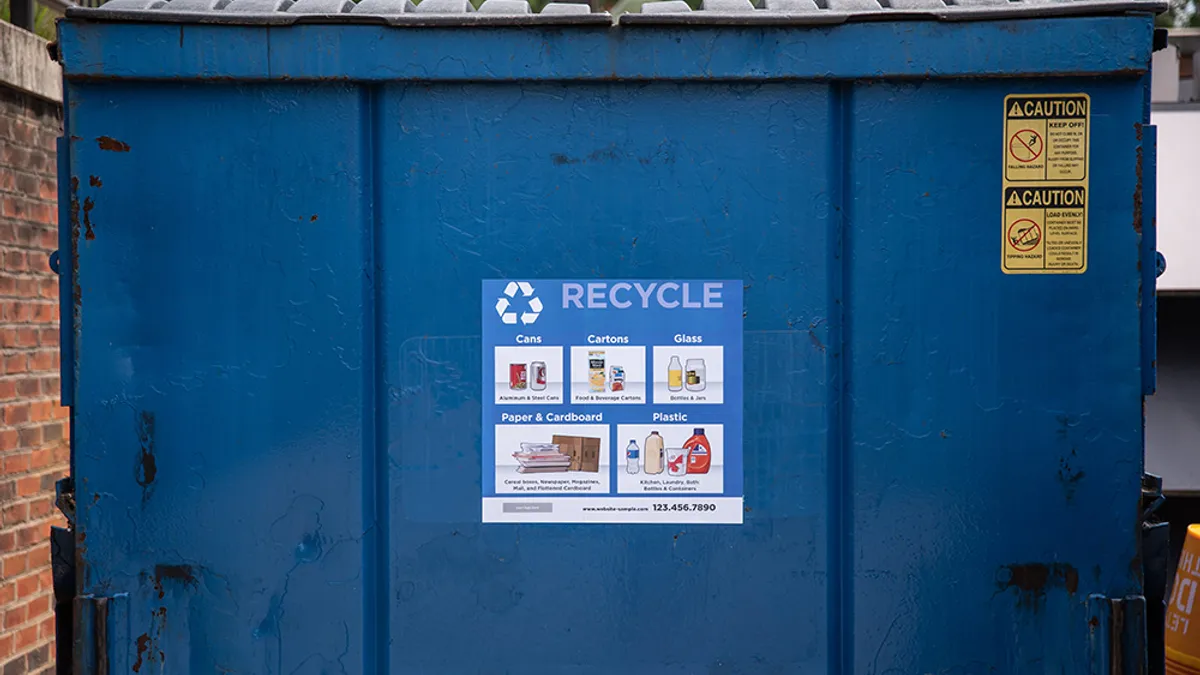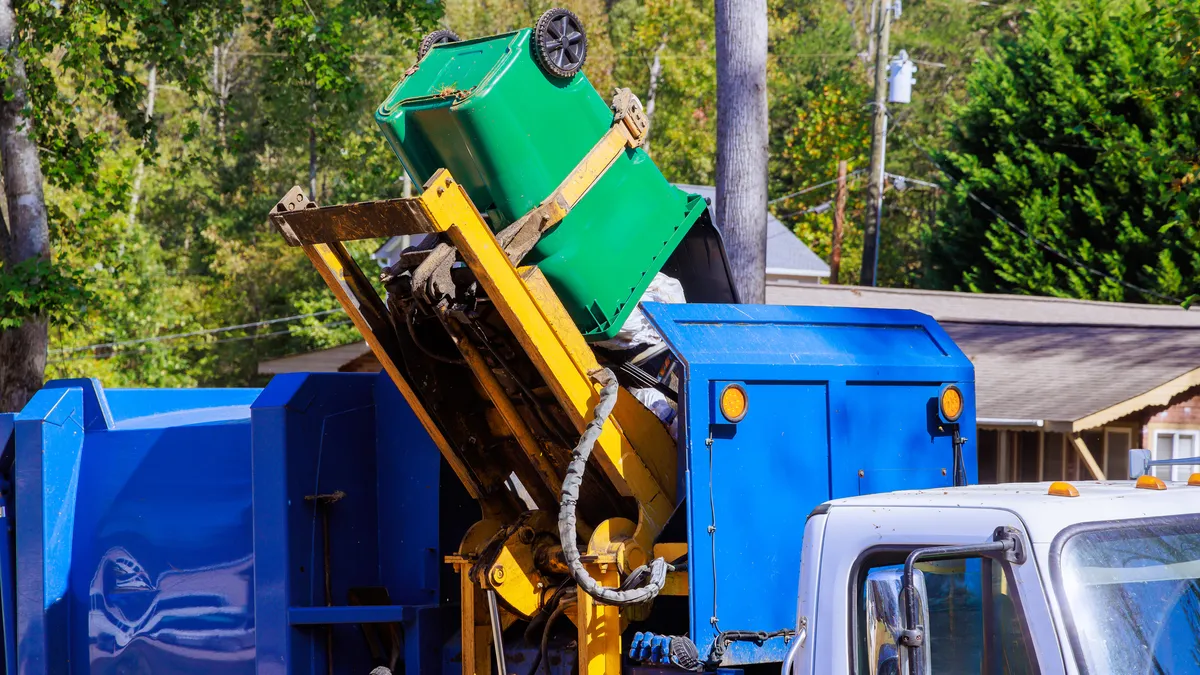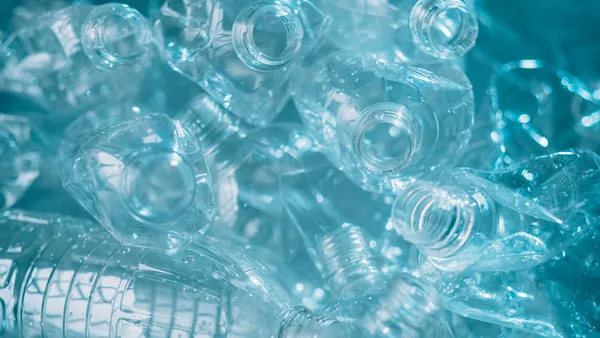Dive Brief:
- The Recycling Partnership recently launched DIYSigns, a free online sign tool to help consumers better understand what can be recycled in their community, in beta form. The open-source tool includes access to customizable templates with clear descriptions and pictorial depictions of items allowed in a community's recycling bins.
- The templates do not require special graphic design expertise or software other than Adobe Flash Player. There are more than 100 variations of materials that can be displayed on labels and signs in a variety of sizes, from a business card to the entire wall of a building.
- "We're using our tested and proven campaign materials that we've used in communities all over the country – those images we know resonate with residents. They like to see the image of what they have in their hand when they're trying to figure out if it is or isn't recyclable," Samantha Kappalman, vice president of strategic communications and marketing, told Waste Dive. "This is a way to cut down on consumer confusion, which is one of the top reasons why trash still ends up in recycling bins."
Dive Insight:
DIYSigns can be used by anyone who wants to assist with reducing consumer confusion about recycling. That could include residents, schools, offices or sports stadiums. Municipalities, for example, could upload their official logo and any hashtags from social media recycling campaigns into the templates along with the standard graphical depictions. Offices could hang posters in break rooms or affix stickers to recycling bins.
DIYSigns is intended to supplement, not preempt, existing recycling messaging. For example, many communities' curbside carts simply display "trash" or "recycling" and not necessarily the exact items that should be placed into the recycling cart. Attaching a customized DIYSigns sticker to these carts would help consumers' understanding of their local recycling program and reduce inclusion of non-recyclable items, Kappalman said.
The simplicity and low cost of creating and downloading the labels and signs is seen as an easy way to create and post new ones as recycling streams change. Streams are changing in a number of communities across the country due to a variety of market and industry evolutions. Communities especially are eliminating glass and certain types of paper or plastics from curbside pickup, instead getting back to "core" recyclables – such as aluminum cans and PET bottles.
The concept of using clear imagery to help consumers understand what can be recycled in their region is not an entirely new one. Recycle Across America is a high-profile organization working toward recycling standardization with clear labels and messaging to guide consumers. Kappalman said The Recycling Partnership did not work with Recycle Across America on this project, but rather expanded upon its existing work and educational campaigns.
Both organizations' efforts aim to simplify recycling for consumers, which ultimately reduces contamination. The level of contamination in recovered material streams is blamed for a large proportion of the recycling industry's current challenges. High contamination rates were among the reasons China stopped accepting many commodities. Quality issues can also be difficult for many North American material processors to handle without significant and costly infrastructure upgrades. Creating cleaner streams by eliminating unwanted items and residues begins with consumers correctly sorting and rinsing their materials — efforts that can be aided by clear messaging.
"So many people have asked us for something just like this," Kappalman said. "This is a real boost for anybody trying to educate and enable recycling programs that deliver top-rate communications with the people they serve."















